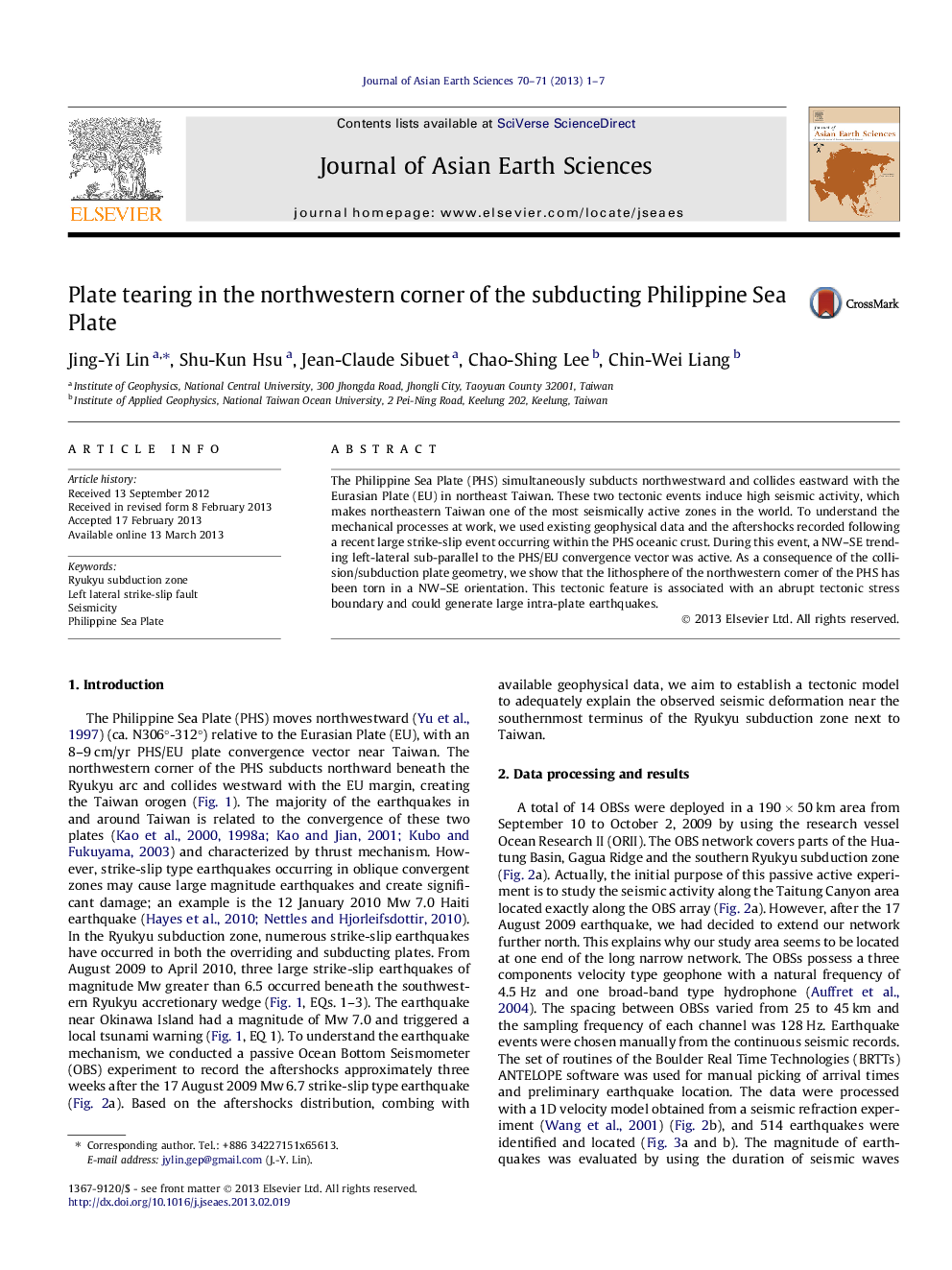| Article ID | Journal | Published Year | Pages | File Type |
|---|---|---|---|---|
| 4730983 | Journal of Asian Earth Sciences | 2013 | 7 Pages |
The Philippine Sea Plate (PHS) simultaneously subducts northwestward and collides eastward with the Eurasian Plate (EU) in northeast Taiwan. These two tectonic events induce high seismic activity, which makes northeastern Taiwan one of the most seismically active zones in the world. To understand the mechanical processes at work, we used existing geophysical data and the aftershocks recorded following a recent large strike-slip event occurring within the PHS oceanic crust. During this event, a NW–SE trending left-lateral sub-parallel to the PHS/EU convergence vector was active. As a consequence of the collision/subduction plate geometry, we show that the lithosphere of the northwestern corner of the PHS has been torn in a NW–SE orientation. This tectonic feature is associated with an abrupt tectonic stress boundary and could generate large intra-plate earthquakes.
► Aftershocks obtained from an OBS experiment determine the rupture direction. ► Interaction between collision and subduction could cause sharp tectonic stress boundary. ► Results show a plate tearing occurring sub-parallel to the convergence vector.
